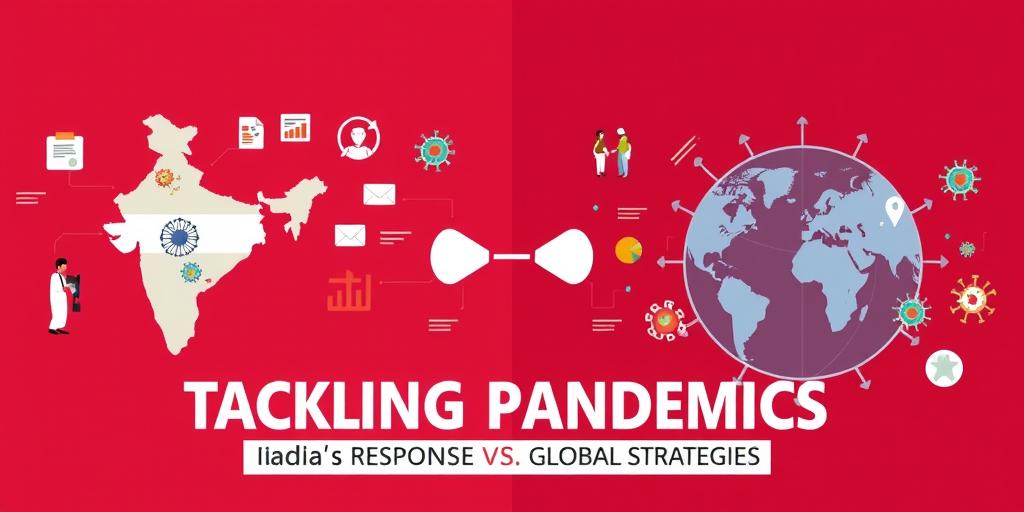Tackling Pandemics: India’s Response vs. Global Strategies
The COVID-19 pandemic exposed vulnerabilities in global healthcare systems and highlighted the critical need for effective pandemic preparedness and response strategies. This post examines India’s approach to managing the pandemic in comparison to global strategies, analyzing the strengths, weaknesses, and lessons learned.
India’s Pandemic Response: A Multi-Faceted Approach
India’s response to the COVID-19 pandemic was characterized by a combination of nationwide lockdowns, public health interventions, and vaccination campaigns. Key elements included:
- Lockdowns: Implemented in phases to control the spread of the virus, impacting economic activity and livelihoods.
- Testing and Tracing: Efforts to identify and isolate cases, although capacity constraints posed challenges.
- Healthcare Infrastructure: Rapid expansion of hospital beds, oxygen supply, and ICU facilities.
- Vaccination Drive: One of the world’s largest vaccination programs, prioritizing vulnerable populations.
Global Pandemic Strategies: A Comparative Perspective
Globally, countries adopted diverse strategies to combat the pandemic. Some key approaches included:
- Early and Stringent Lockdowns: Countries like New Zealand and Australia pursued aggressive containment strategies.
- Mass Testing and Contact Tracing: South Korea and Germany implemented extensive testing regimes.
- Rapid Vaccine Development and Deployment: Accelerated vaccine development efforts led to the deployment of mRNA vaccines in record time.
- International Collaboration: Global initiatives like COVAX aimed to ensure equitable vaccine access.
Strengths and Weaknesses: A Comparative Analysis
India’s Strengths:
- Pharmaceutical Manufacturing Capacity: India’s robust pharmaceutical industry enabled the production of vaccines and essential medicines.
- Digital Infrastructure: The use of digital platforms for vaccine registration and distribution.
- Community Engagement: Leveraging community networks for awareness campaigns and support.
India’s Weaknesses:
- Healthcare Infrastructure Gaps: Overburdened healthcare systems in many regions.
- Socioeconomic Disparities: Vulnerable populations disproportionately affected by lockdowns and economic disruptions.
- Data Management Challenges: Issues with data collection, reporting, and transparency.
Global Strengths:
- Scientific Collaboration: International research efforts led to rapid vaccine development and scientific advancements.
- Financial Resources: Developed countries mobilized significant financial resources for pandemic response.
- Multilateral Coordination: Global organizations played a crucial role in coordinating international efforts.
Global Weaknesses:
- Vaccine Inequity: Unequal access to vaccines between developed and developing countries.
- Geopolitical Tensions: Political divisions hindered global cooperation.
- Misinformation and Disinformation: The spread of false information undermined public health efforts.
Lessons Learned and Future Preparedness
The COVID-19 pandemic highlighted the importance of:
- Investing in Public Health Infrastructure: Strengthening healthcare systems and public health surveillance.
- Promoting Global Collaboration: Enhancing international cooperation in pandemic preparedness and response.
- Addressing Health Inequities: Ensuring equitable access to healthcare and vaccines.
- Building Public Trust: Communicating effectively and transparently to build public trust.
Conclusion
Tackling pandemics requires a coordinated global effort. By analyzing the experiences of India and other countries, we can identify best practices, address weaknesses, and build more resilient healthcare systems to face future health crises.
